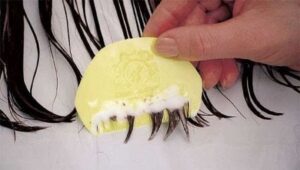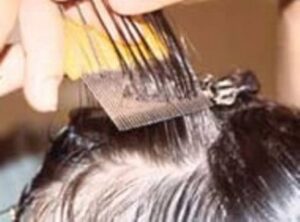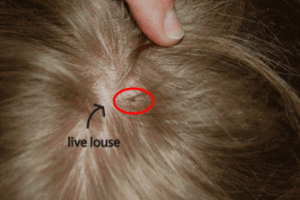Within most schools at any one time, there will be a small number of children infected with head lice. Infection levels remain fairly constant so we need your help to combat the bugs!
County Durham & Tees Valley Health Protection Unit have developed a head lice policy for schools. As a school it is our job to promote the policy and ensure parents/carers are provided with the advice and support to effectively detect and treat cases of head lice affecting their own children.
We understand your frustrations and concerns regarding head lice. Here are some answers to your questions:-
Who is responsible for the prevention of head lice?
It remains parental responsibility to detect and administer treatment for head lice to their own children.
Why do you not exclude children from school who have head lice?
This is not an option. The Department for Children, Schools and Families advises that pupils should not be excluded. The reason for this is that although head lice are unpleasant it is not classed as an infectious disease, which warrants keeping a pupil away from school. Also we are informed by the Health Authority that head lice is relatively difficult to pass from one person to another and they have advised that prolonged head to head contact is required to transfer head lice from one head to another.
Why do we no longer receive letters when there is an outbreak of head lice?
Most schools are likely to have a few pupils with head lice at any one time. On that basis, ‘alert’ letters could potentially be required every day of the school year. ‘Alert’ letters also frequently lead parents to attempt to treat their children preventatively, which is neither effective nor advised. Head lice infection cannot be prevented, and over-use of insecticide treatments may lead to resistance.
What is the school doing to help control infection?
Although schools no longer have ‘nit nurses’ or do termly checks we do still have an important role in supporting parents in managing the problem. By working closely with parents and our pupils and promoting the head lice policy we can hopefully make a difference. We will provide advice and support to parents by promoting our new campaign ‘Once a week, take a peek’, and additional support from the school nurse if requested by a parent. If your child is suspected of having head lice we will inform you and request that you check your child and treat if necessary.
What can I do as a parent to help control infection?
As previously mentioned it is parental responsibility to detect and administer treatment for head lice to their own children. We would like you to check your child for head lice once a week using a nit comb which are available from the local chemist, From time to time you will receive ‘Once a week, take a peek’ messages to remind you of our campaign to ‘take a peek!’ in your child’s hair. This is a reminder to check your child’s hair as head lice don’t always cause an itchy scalp (head) so many people will be unaware that they are infected. We understand girls like to wear their hair down but we do request that long hair is tied up to minimise head to head contact in school.
Treating head lice is not a problem. Detection and effective ongoing treatment of head lice is key to reducing the outbreaks.
Further Information
What If Head Lice Are Still There After Treatment?
If you still find live lice after you finish the treatment either its failed or there has been a re-infestation. If the treatment failed you’ll usually find lice of all stages but a re-infestation will have less lice if discovered quickly. You’ll need to treat again so make sure:
- If you’re using an pesticide change to a different type of treatment
- You use a good quality comb if you’re using the ‘Bug Busting’ method
- You read the instructions carefully and follow them exactly
- You use enough treatment to cover the whole head and full length of hair
- You leave the treatment on for long enough
- You complete the treatment course
How Do I Get Rid of Head Lice?
Wet combing method.
The wet combing (‘bug-busting’) method is physically removing lice using a nit comb, without using chemical treatments. This method can be helpful because head lice are growing increasingly resistant to the insecticides used to remove them.
However, success depends on adopting a painstaking approach of regular and thorough combing.
The best procedure is as follows:
- Wash the hair as normal using an ordinary shampoo.
- Apply conditioner liberally to wet hair (this causes the lice to lose their grip on the hair).
- Comb the hair through with a normal comb first, until the comb runs freely.
- Then, with a fine-toothed nit comb, comb from the roots along the complete length of the hair and after each stroke, check the comb for lice and wipe it clean. Work methodically over
- the whole head for at least 30 minutes.
- Rinse the hair as normal.
- Repeat every three days for at least two weeks.
Medicated lotion or rinse
Ask your pharmacist for an over-the-counter insecticide lotion or dimeticone (non-insecticide) lotion. Only use a lotion if you find a living (moving) head louse.
Apply the preparation according to the instructions, and remove the lice and eggs with a fine-toothed nit comb. Take care when applying treatment, because the preparations are usually toxic.
The normal advice is to treat once, and repeat seven days later:
- insecticide lotion should be left on for 12 hours or overnight and repeated after seven days, and
- dimeticone lotion should be left on for eight hours or overnight and repeated after seven days.
Make sure you have enough lotion to treat all those affected in your family.
The lotion may be capable of killing eggs, as well as lice, but there is no certainty of this. Check for baby lice hatching out from eggs three to five days after you use it, and again at 10-12 days.
No treatment is 100% effective.
Resistance
If the lice appear to be unaffacted by the product (some lice may have developed resistance to a particular insecticide) or if the problem persists, take advice from your school nurse, health visitor, pharmacist or GP.
Caution
Always ask for advice before using medicated lotions on young babies (under six months), pregnant women or people with asthma or allergies, and always read the instructions carefully.
Pregnant women are advised to use either wet combing or dimeticone, which is licensed for use in pregnancy and breastfeeding
How Do I Look For Head Lice?
To diagnose a case of head lice you need to find them alive. This is when you need to use a treatment. They move fast and are small – so they can be hard to find!
Head lice range in sizes from a full stop to a sesame seed.
Where to Peek:
- Close to the scalp
- Behind the ears
- The back of the neck
- The top of the head
- Under the fringe
What to Peek for:
- Adult lice are 2-4 mm long. Immature lice are even smaller
- Live lice remain close to the scalp
- Nits are dead or empty egg shells. Simply remove these by comb/hand
Checking for lice might not be your idea of fun but it’s really no big deal and shouldn’t be a stressful experience for you or your child. It is just a normal part of every family’s personal hygiene routine, like brushing your teeth or washing your hair, so a good time to do it would be watching the TV or at bath-time. You could make this experience even more stress-free by:
- Showing your child how to check their own hair
- Using the weekly peek as an opportunity to tell a story or ask about their day
- Asking them to check your hair for you
- Rewarding your child for each week’s successful search
- Turning it into a fun game of hide and seek
- Putting their favourite TV programme on whilst checking
Good lighting is important and so is comfort! Comb for lice, parting hair in small sections and returning from time to time to areas you’ve already covered just to make sure.
Head Lice The Facts!
Head lice are live insects. Their empty eggs are called nits. Lice are wingless insects that hold on to the hair, feeding from the blood in the scalp. They spread through head-to-head contact but contrary to common belief, they do not jump. Adult females live for up to a month and lay around five eggs a day.
Head lice are seen as an established part of school life – as children spend so much time playing and learning together, it is very easy for them to spread.
Lice spread when heads come in contact so sleepovers, after-school activities, playing with friends and visiting family are also common places for children, and adults, to pick them up and pass them on.
7 Key Head Lice Facts:
- Head lice are common among young children and their families
- Head lice don’t spread disease
- Head lice can be spread from adults to children and back again
- There’s nothing to be embarrassed or ashamed about having head lice
- Having head lice has nothing to do with good or bad personal hygiene
- Lice eggs hatch after around 7 days so two applications are always needed to make sure all lice have been killed
- There are pesticide, non-pesticide, combing and alternative treatments on the market. Your pharmacist will be able to help you work out which is best for you and your family







